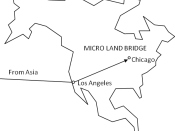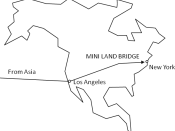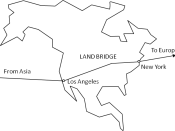ADRIANA BETSAIDA MARTINEZ MILLAN
LOGISTICS
MEANS OF FREIGHT TRANSPORTATION
Over time the industries have been searching the best way to have a better scope, optimize resources and
have the lowest possible cost, but they have been changing. Freights are moved by different transport modes
but each mean has different challenges related to theft and loss, these are the means by
which people and freight achieve mobility.
They fall into one of three basic types, depending on over what surface they travel:
1. Land (road, rail and pipelines): Ground transport is typically more affordable than air, but more expensive than sea especially in developing countries like India, where inland infrastructure is not
efficient. 2. Water (shipping): Merchant shipping is the lifeblood of the world economy, carrying 90% of
international trade with 102,194 commercial ships worldwide. On rivers and canals, barges are often
used to carry bulk cargo. 3. Air: Cargo is transported by air in specialized cargo aircraft and in the luggage compartments of
passenger aircraft. Air freight is typically the fastest mode for long distance freight transport, but also
the most expensive.
Each mode is characterized by a set of technical, operational and commercial characteristics that are going to
be explained below.
MEAN OF TRANSPORT CHARACTERISTICS ADVANTAGES DISADVANTAGES Land (Rail) Domestic godos, heavy
goods and has a wide range of applications
⢠Fast delivery
⢠Cappacity
⢠Cost effective
⢠Safe mode of transport
⢠Reliable
⢠Potential of damages, from shunting
⢠Reliance on rail freight operator's timetable
⢠Limited routes Land (Road) Most commonly used
method ⢠Cost effective
⢠Fast delivery
⢠Ideal for transport perishables
⢠Easy to communicate with the driver
⢠Transport subject to traffic delays
⢠Bad weather
⢠Less safe than the alternatives
⢠Driving regulations can cause delays
Water Used by...


